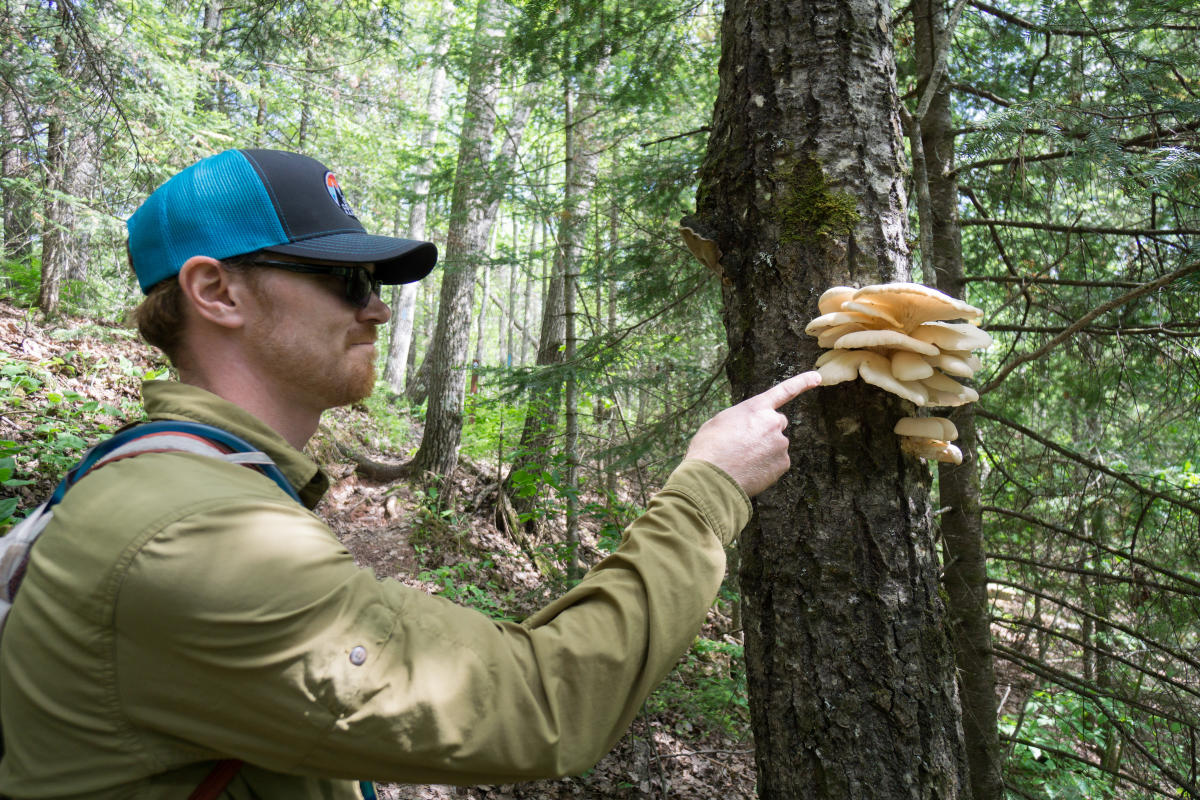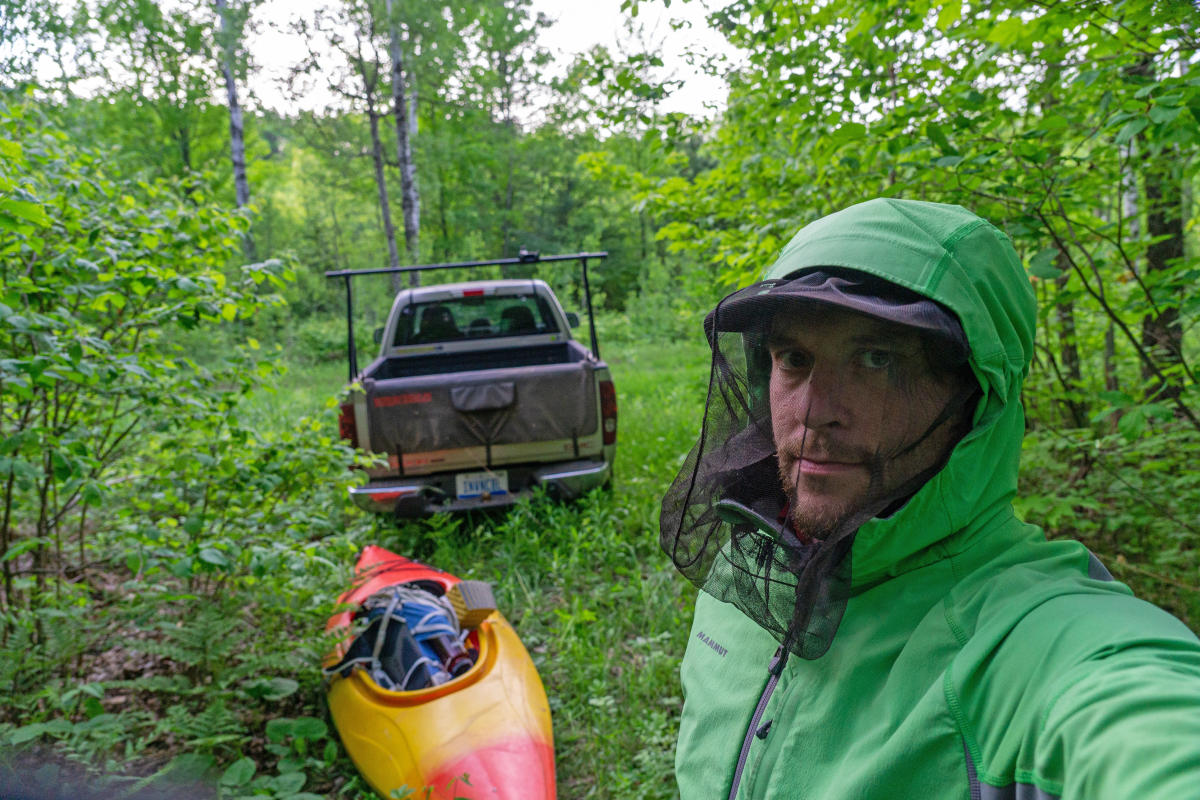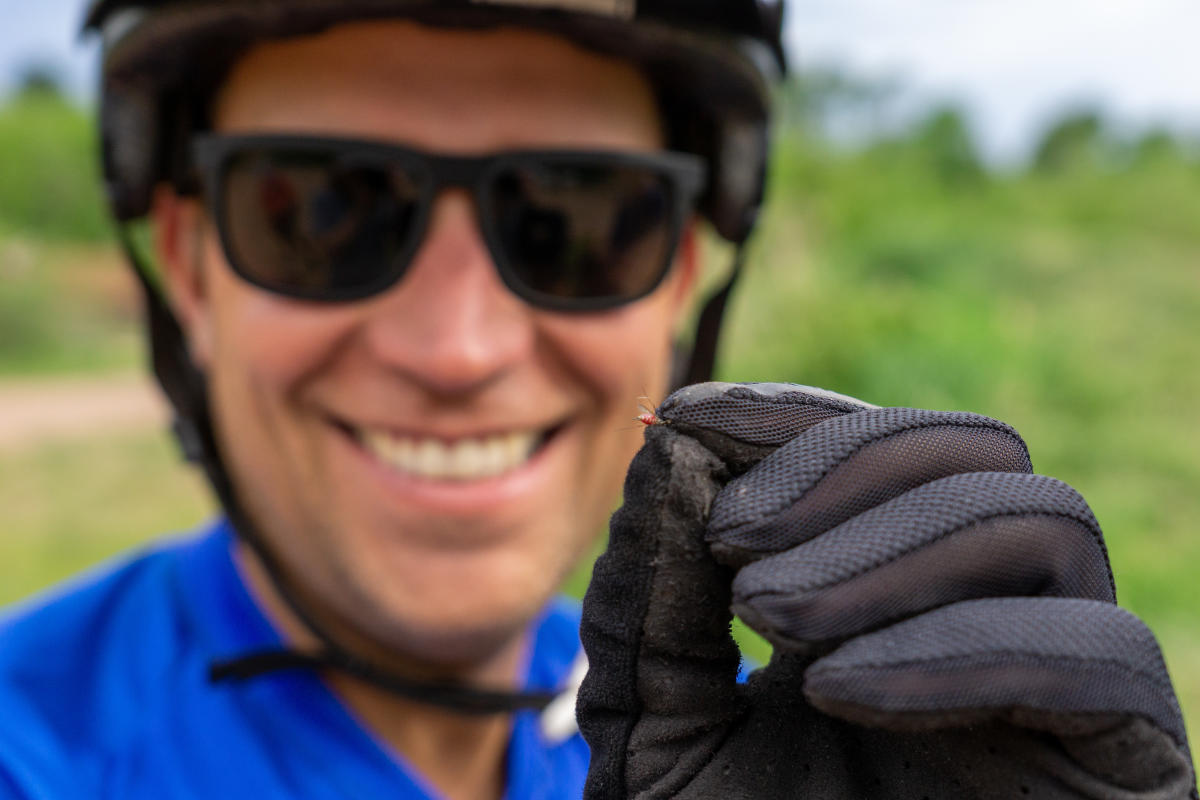The Keweenaw has many things in abundance. Beautiful scenery! Rugged shorelines! History nearly everywhere you look! There’s one thing we don’t often talk about though: the bugs! Love ‘em or hate ‘em, they live here too and can be a force to be reckoned with.
Never fear though, because it doesn’t have to be all bad. We’ve teamed up with local adventurer Nathan Invincible Miller to share how he gets through the ups and downs of a Keweenaw bug season. From when and where to go to tried and true tactics for fending them off, we’ll show how your visit to the Copper Country can be fun, even with mosquitoes on your tail.
 Don't let insects ruin your fun! Follow along to learn how to deal with those pesky bugs.
Don't let insects ruin your fun! Follow along to learn how to deal with those pesky bugs.
What You’re Missing
Although bug season sounds like something to be avoided, in reality you’ll spend far more time enjoying yourself than running from creepy crawlies if you follow our tips below. Spring and early summer are enchanting times to watch the Keweenaw come back to life after a long winter. Wildflowers burst in color across the landscape while every shade of green can be found in new leaves and shoots. Early-season mushrooms and other wild edibles are everywhere if you know where to look. The newness of everything is truly a wonder to behold.
Spring is a great time to get outdoors for foraging or viewing wildflowers, but it's important to be prepared for bugs.
Another perk of bug season: far fewer visitors! It’ll feel like you have trails and other scenic sites all to yourself in early to mid-June. If you like your photos and experiences free of other people, now’s the time to visit. You might have to duck for cover occasionally from a squadron of hungry black flies, but that’s a small price to pay for picture perfect scenery.
Keweenaw Bug Seasons
Biting insects come in all shapes and sizes. Unfortunately, while the Keweenaw is blessed with a wide variety of outdoor recreational activities to take part in, we’re also home to a variety of pesky, biting insects.
Here’s a list of what you might face out there, where you’ll find them, and when they peak in the Keweenaw area.
-
Mosquitoes: These lanky insects are the first you’ll start swatting in spring time. They usually arrive in mid to late-May and peak in mid-June. They can be found just about anywhere but are concentrated near still bodies of water. Mosquitoes are lazy fliers and make excellent targets for hand splats. Although their numbers start to wane in early-July, small numbers can be found throughout the summer. Mosquitos will seek out any exposed skin and can bite through hair or porous clothing for a meal.
-
Black Flies: Small, devious, and the one to watch out for most. Black flies come on the scene in late-May and hang around into July. At their peak in mid-June, these little guys can do some serious damage. They are smaller than mosquitoes yet create itchy welts if allowed to feed. They have a tendency to burrow into hair and often bite under the brim of hats. Black flies fade out quickly and can be found almost everywhere.
-
Deer Flies: When the weather warms in mid-summer, be on the lookout for deer flies. Along with their horse and sand fly counterparts, these large flies are fast, dumb, and pack a painful wallop. They hang around hot areas with lots of sun and can often be found along beaches or shorelines. They peak briefly in late-July and August. You cannot run from deer flies as they fly at near-highway speeds. Head for the shade!
-
No-See-Ums: Also known as biting midges, no-see-ums are as big as their name implies. They are truly too tiny to see! You’ll know they’re there when you feel a pin prick of a bite and a small dot afterwards. They are not as common or bothersome as the others here and arrive in mid-summer.
-
Ticks: They may not fly, but they will ruin your day if you’re not careful. Precautions must be taken against these blood-sucking foes because they have the potential to carry Lyme disease and more. The most common varieties found in Michigan are wood ticks (American dog tick) and deer ticks (blacklegged tick). They are active any time the landscape is snow-free and are more prevalent in areas with tall grass, overgrown trails, and wooded areas.
Depending on the weather you might see these bugs slightly earlier or later than usual. Heavy snow cover into spring and cool temperatures delay their onset, while warmer, humid summer days may cause populations to spike rapidly. Droughts, on the other hand, help temper insect populations at the expense of drying up waterfalls and making trails dusty.
How to Avoid Them
Most of these biting insects tend to avoid wide open areas where winds are higher or there’s less natural habitat. The tops of hills like Mount Baldy or Brockway Mountain are prime examples. Most also avoid large bodies of water or Lake Superior’s cooler shoreline.

Bugs tend to avoid wide open spaces where winds are stronger, like the top of Brockway Mountain Drive.
You can also head underground. The tours at Quincy Mine, Adventure Mine, and Delaware Mine all are safe havens. Just be aware that they’ll be waiting for you when you resurface!
Finally, have you visited the Keweenaw in the winter? Guaranteed bug-free from October to April.
How to Live With Them
If the shortness of the last section was any hint, it’s impossible to completely avoid bugs here in the Keweenaw. And that’s okay! You shouldn’t let the threat of bugs ruin your trip, because there are plenty of ways to lessen their impact.
First off, wear long sleeve shirts and pants. Bugs can't bite what they can't touch. Consider investing in a head net if you are heading out to the backcountry. For less than $10, you’ll be able to breathe easy in the thickest of swarms. This is the simplest way to be able to live through the worst that bug season has to throw at you. If you tuck your pants into your socks, this strategy will also keep you nearly tick-free as well.

Enjoy outdoor activities, but be prepared for insects!
Next, pick up some good quality bug spray. There are many options available depending on your tolerance for chemicals. DEET will work wonders, but at higher concentrations might eat your clothes. Spray it on exposed skin and watch the mosquitoes and black flies bounce right off (wash your hands before eating). Permethrin can be applied to clothes for a longer effect. If you prefer natural remedies, there are countless options that smell great and will help keep the flying baddies at bay.
Be flexible with where you go. If the June weather is looking humid (in other words, perfect for bugs), consider heading for the lakeshore where the cooler temperatures will keep the insects in check. The Keweenaw has a ton of lighthouses to check out where bugs will be kept to a minimum compared to sites further inland. Windy days should be exploited! Skeeters and black flies struggle against a breeze. Be ready to call it a day when the sun goes down because you don’t want to get caught hiking home in late-evening. That’s when the mosquitoes and black flies are hungriest.

Keep moving to avoid getting bit.
Finally, don’t stop moving. Whether you’re mountain biking, riding in your ORV, hiking, or paddling, don’t hang around one spot for too long. Those aerial carnivores can smell you from a mile away (literally) and will home in on your location in no time. Keep ‘em guessing by keeping your breaks to a minimum.
A Special Note About Ticks
Ticks are no good. At the moment, none of the other biting insects on this list (in the UP) will harm you more than causing you to itch and donate a little blood to the next generation. Ticks, however, can really cause some problems. Lyme disease is no joke. Rock Mountain Fever, another disease that is slowly making its way into the Michigan tick population, also should be avoided. As the climate warms, others may follow.
At the end of every adventure, it’s important to do a tick check. Look under your socks, along your legs, under your armpits, hair line, and nether regions. Ticks love out of the way places to latch on and feed. If you find one, remove it promptly and carefully! Use tweezers to grab the tick by the head as close to your skin as possible. Pull firmly to ensure the entire tick is removed, then flush or squish it. Wash and watch the site for a few days just in case. If you catch a tick right after a hike you normally have nothing to worry about.

Check yourself and your animals for ticks after any outdoor adventures.
Be sure to do the same with your dogs. Dogs also can get Lyme disease and be impacted for life, just like humans. In addition to preventative flea and tick medications for your pooch, they can also be vaccinated against Lyme disease to help reduce their chances of contracting it. Stay safe out there!
Interested in updates, travel tips and quirky information about the Keweenaw? Just sign up for the Keweenaw Explorer, our monthly e-newsletter. Complete the form…

